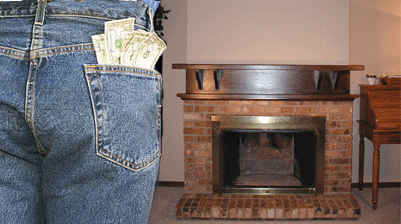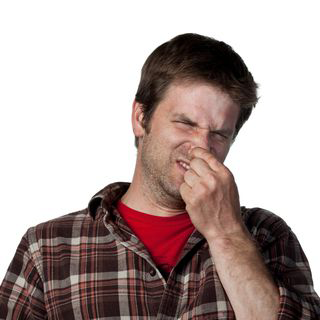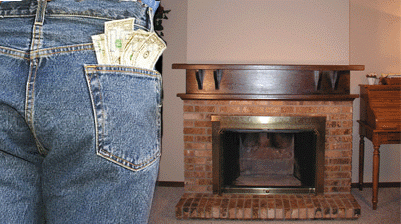
by blogediter | Feb 25, 2019 | Fireplaces
Fire Place sucksanim
On a cold winter eve who of us is not tempted to go to the living room and stoke up a fire in the fireplace and read a book in front of the fire? You may be thinking “I am doing myself a favor by supplementing the furnace with additional heat”, but in fact, you are making your house colder and could be contributing significantly to pollution depending upon how you burn.
The wood burning fireplace is a losing proposition
The air action that a wood burning fireplace initiates in our home is wasteful. The moment the damper is opened heated air begins pouring out of the top of the chimney. As the fire in the hearth accelerates, the combustion process grabs already heated air from your home and burns the oxygen and combustible gasses in it. The heat that is created in this combustion quickly rises and grabs more heated inside air and tosses it up the chimney. You can restrict the amount of inside air that the fireplace has access to by installing glass doors, but this will also severely limit the amount of radiant heat that fireplace can cast forward into your living space. This radiant heat is the heat you feel on your skin in front of the fireplace and is the only usable heat that the fireplace will produce since the combustion heat is pouring out the top of the chimney. In the meantime, the home is drawing in cold outside air from other places (i.e. windows, light sockets, doors, etc) to replace the air that is escaping the home through the chimney. This is referred to as the “stack effect”.
Loosing heat even while dormant
Even while the wood fireplace is not being used, the traditional metal dampers tend to leak air since they warp and degrade rapidly in the extreme heat and corrosive soot environment. The removable and reusable Chimney Balloon fireplace chimney damper available in assorted sizes inflates into place in the flue and seals it off efficiently to stop heat loss and the cold draft.
The good, the bad, and the pollution
If you burn a fast hot fire this creates very little smoke and pollution, and it can give you a noticeable amount of radiant heat gain in the room the fireplace it is in. However, it is using volume amounts of your already heated inside air for its combustion which exceeds your heat gain ratio. A slower fire is even worse since you are still loosing heated air out the chimney and getting very little radiant heat in return. This black type of fireplace smoke is a terrible pollutant and contributes to respiratory irritant for people with asthma and allergies.
Wood burning fireplaces are wonderful nostalgic centerpieces for many American homes. But a homeowner should be aware of the issues associated with fireplace use.
Sources:
US Department of Energy
WoodHeat.org
GreenBuildingElements.com
by blogediter | Sep 26, 2018 | Chimney Plugs
Q: I am tired of high propane prices and I can’t afford to upgrade my furnace yet. So, this winter I am trying to heat my living room area with my wood burning fireplace. My intent is to use the fireplace as a supplementary heating source so my furnace doesn’t run so much. SB
[SB has an open zero clearance fireplace that is built on an outside wall of your home. It has no glass doors and not heatilator or fan.]
A: SB, Unfortunately, Efficiency wise this is probably the worst type of setup possible in order to generate heat to the living area. As a matter of fact, you will probably find that you consume 10% to 230% more propane when you are using the fireplace than when you don’t use the fireplace. I would encourage you NOT to use your fireplace as a way to save money on heat. Here is why:
1) The first thing you do when you go to start a fire in the fireplace is open the damper in the flue. Opening your fireplace damper is like opening a hole in your sealing. The second you open it the warm interior air is raising right out the chimney. So until you get a sizable fire going that is generating a good amount of radiant heat you are loosing heat to the chimney.
2) While you have a sizable fire going in the fireplace you are loosing in 3 ways.
- The fire is drawing warm air from your home for the combustion process.
- The fire is casting 90% of its BTUs up the chimney and only putting forward 10% into your home as usable radiant heat.
- The chimney is continuing to pull warm atmospheric air from your home and allow it to rise out the chimney. This in turn creates a vacuum stack effect that draws cold outside air in through cracks, windows and doors making your home cooler.
3) When the fire dies down and smolders you still have to wait with your damper open. The smoking and heat has to stop entirely before you can close the damper. During this time your fireplace is not generating any radiant heat at all and the damper is still robbing your home of heat.
SB, The moral of this story is a fireplace is not a good source of heat for a home. I know that our forefathers use to heat their entire homes with this type of heat, but the issues that I explained is the reason that potbelly stoves and wood furnaces became so popular in the 1800’s.
There are some things you can do to make your fireplace more efficient and I discuss them in this blog article: http://chimneyballoon.typepad.com/blog/2007/01/how_can_i_help_.html

by blogediter | Feb 2, 2018 | Chimney Problems
Lingering burnt smell
Q: Dear Jason, I inflated the 15 x 15 Chimney Balloon and placed it above the damper to get rid of chimney smell. It’s much better, but I still smell it a bit after about a week. Any suggestions on how to completely get rid of the odor? Thanks, EP
A: HI EP, Fireplace odors can be tricky but here are some tips. Feel with your hand around the edges of the flue wall to make sure you have the Chimney Balloon installed as tight as possible.
If the positioning is good then it is likely that the firebox has some stinky creosote and ash residue that is creating the lingering smell. Make sure you vacuum out the firebox again really well with a shop vac. Then take a couple of boxes of baking soda and throw it all over the firebox surfaces blow the Chimney Balloon. Throw the baking soda against the firebox walls, against the damper, shake it out on the firebox floor and just basically coat everything with baking soda. If you have a hard time getting it to stick to vertical areas use a light spritz of water to get it to grab.
Let that set in your fireplace for at least 48 hours, or if you can stand the sight of it leave it for a week. The longer the better. Then shop vac all of it up. That should take care of the left-over smell. – Jason

by Jason Raddenbach | Aug 29, 2017 | Chimney Problems
Fireplaces take more than they give. On a cold winter eve who of us is not tempted to go to the living room and stoke up a fire in the fireplace and read a book in front of the fire? You may be thinking “I am doing myself a favor by supplementing the furnace with additional heat”, but in fact you are making your house colder and could be contributing significantly to pollution depending upon how you burn.
The wood burning fireplace is a loosing proposition
The air action that a wood burning fireplace initiates in our home is wasteful. The moment the damper is opened heated air begins pouring out of the top of the chimney. As the fire in the hearth accelerates, the combustion process grabs already heated air from your home and burns the oxygen and combustible gasses in it. The heat that is created in this combustion quickly rises and grabs more heated inside air and tosses it up the chimney. You can restrict the amount of inside air that the fireplace has access to by installing glass doors, but this will also severely limit the amount of radiant heat that fireplace can cast forward into your living space. This radiant heat is the heat you feel on your skin in front of the fireplace, and is the only usable heat that the fireplace will produce since the combustion heat is pouring out the top of the chimney. In the meantime the home is drawing in cold outside air from other places (i.e. windows, light sockets, doors, etc) to replace the air that is escaping the home through the chimney. This is referred to as the “stack effect”.
Loosing heat even while dormant
Even while the wood fireplace is not being used, the traditional metal dampers tend to leak air since they warp and degrade rapidly in the extreme heat and corrosive soot environment. The removable and reusable Chimney Balloon fireplace chimney damper available in assorted sizes inflates into place in the flue and seals it off efficiently to stop heat loss and the cold draft.
The good, the bad, and the pollution
If you burn a fast hot fire this creates very little smoke and pollution, and it can give you a noticeable amount of radiant heat gain in the room the fireplace it is in. However it is using volume amounts of your already heated inside air for it combustion which exceeds your heat gain ratio. A slower fire is even worse since you are still loosing heated air out the chimney and getting very little radiant heat in return. This black type of fireplace smoke is a terrible pollutant and contributes to respiratory irritant for people with asthma and allergies.
Wood burning fireplaces are wonderful nostalgic centerpieces for many American homes. But a homeowner should be aware of the issues associated with fireplace use.
Sources:
US Department of Energy
WoodHeat.org
GreenBuildingElements.com


